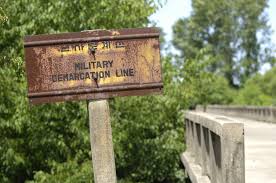 I’ve completed the final edits for Turtle Reef, which is due for release with Penguin on the 25th of March. Hopefully I’ll be able to reveal the cover next week. Finishing a novel always evokes mixed feelings – excitement at moving on to a new project; regret at leaving much-loved characters behind. As readers of my books will know, I have animal characters as well as human ones, and sometimes they’re the ones I miss the most. Zenandra, the wasp queen from Wasp Season; Whirlwind, the mysterious brumby mare from Brumby’s Run; Samson, the loyal German Shepherd from Currawong Creek and the charming Magpie geese goslings from Billabong Bend – these characters stay with me long after the final words are written.
I’ve completed the final edits for Turtle Reef, which is due for release with Penguin on the 25th of March. Hopefully I’ll be able to reveal the cover next week. Finishing a novel always evokes mixed feelings – excitement at moving on to a new project; regret at leaving much-loved characters behind. As readers of my books will know, I have animal characters as well as human ones, and sometimes they’re the ones I miss the most. Zenandra, the wasp queen from Wasp Season; Whirlwind, the mysterious brumby mare from Brumby’s Run; Samson, the loyal German Shepherd from Currawong Creek and the charming Magpie geese goslings from Billabong Bend – these characters stay with me long after the final words are written.
Turtle Reef is no different. Set at the southern tip of the Great Barrier Reef, the story includes a wide range of marine animals (and horses of course). Some like Kane, the dolphin, and Einstein, the octopus, are characters in their own right. Others such as the sea turtles and dugongs fuel the narrative in more general ways.
 Out of curiosity I decided to research the place of dugongs in fiction. It surprised me to discover that there are very few books about these unique animals, and all of them seem to be for children. Dabu Grows Up: The Tale of a Dugong is a picture book set in the tropical waters of the Torres Strait. Dabu is a young dugong whose mother is taken by hunters. Dabu learns about life, respect for the natural world, loneliness and friendship as he explores a tropical reef, finally deciding that to survive he must return to his herd. Denis, the Dugong follows the adventures of an Arabian dugong, and is enriched with details of the surrounding flora and fauna. The book is part of a series stressing the importance of conservation in the Arabian Peninsula. Dipanker the Dugong is a similar book set in India. That’s it – all I could find. Please comment if you know of any others. I’m thrilled to think that my new book Turtle Reef will help raise the profile of these enchanting and under-represented animals in fiction.
Out of curiosity I decided to research the place of dugongs in fiction. It surprised me to discover that there are very few books about these unique animals, and all of them seem to be for children. Dabu Grows Up: The Tale of a Dugong is a picture book set in the tropical waters of the Torres Strait. Dabu is a young dugong whose mother is taken by hunters. Dabu learns about life, respect for the natural world, loneliness and friendship as he explores a tropical reef, finally deciding that to survive he must return to his herd. Denis, the Dugong follows the adventures of an Arabian dugong, and is enriched with details of the surrounding flora and fauna. The book is part of a series stressing the importance of conservation in the Arabian Peninsula. Dipanker the Dugong is a similar book set in India. That’s it – all I could find. Please comment if you know of any others. I’m thrilled to think that my new book Turtle Reef will help raise the profile of these enchanting and under-represented animals in fiction.
 Dugongs belong to the order Sirenia, named after the legendary sirens of the sea. Their closest living relatives are the manatees and they’re also distantly related to elephants. Dugongs are found throughout the Indo-pacific region, but over the past century many populations have disappeared. Australia is their last stronghold, but even here they are in dramatic decline. Threats to dugongs are all man-made: entanglements in shark and fishing nets, marine debris, loss of sea grass meadows due to dredging and agricultural run-off, traditional hunting and collisions with boats. I’ve always loved these gentle giants of the sea that have existed on earth for 45 million years. What a tragedy if after all this time they went extinct on our watch! 🙁
Dugongs belong to the order Sirenia, named after the legendary sirens of the sea. Their closest living relatives are the manatees and they’re also distantly related to elephants. Dugongs are found throughout the Indo-pacific region, but over the past century many populations have disappeared. Australia is their last stronghold, but even here they are in dramatic decline. Threats to dugongs are all man-made: entanglements in shark and fishing nets, marine debris, loss of sea grass meadows due to dredging and agricultural run-off, traditional hunting and collisions with boats. I’ve always loved these gentle giants of the sea that have existed on earth for 45 million years. What a tragedy if after all this time they went extinct on our watch! 🙁



































